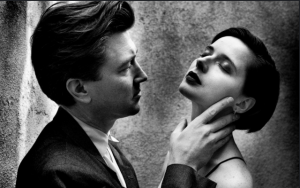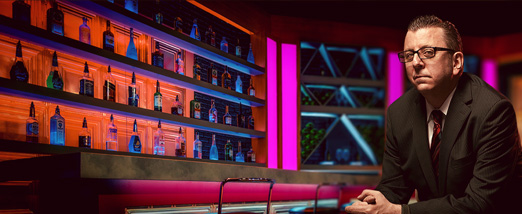HELMUT NEWTON: THE BAD AND THE BEAUTIFUL: 3 STARS. “a snapshot in time.”
 Helmut Newton, the provocative photographer and subject of the documentary “Helmut Newton: The Bad and The Beautiful” now on virtual cinema, often said that there are “only two dirty words”: “art” and “good taste.” The sentiment rings true in context of his work and that his word count is off is also telling; he was a provocateur but a playful one.
Helmut Newton, the provocative photographer and subject of the documentary “Helmut Newton: The Bad and The Beautiful” now on virtual cinema, often said that there are “only two dirty words”: “art” and “good taste.” The sentiment rings true in context of his work and that his word count is off is also telling; he was a provocateur but a playful one.
Newton, whose nudes make up a vast portion of this doc, called himself a “professional voyeur,” someone interested in the surface, his model’s bodies. How can you photograph a soul, he asks? His subjects, the women who fell under his male gaze for decades, have answers. Bold faced names like Isabella Rossellini, Grace Jones, Claudia Schiffer and Marianne Faithfull among others, sing his praises, most describing the liberating effects of standing in front of his camera. His love—or is it obsession?—of the female form is roundly applauded in the film, as it was during his career, but in the #MeToo era photos of naked women with their faces obscured or reduced to an assortment of body parts, or wrapped in chains, don’t sit as well as they once did.
Of all the famous women in the film only Susan Sonntag, appearing on a French language panel show with Newton, addresses the negative undertones of his work.
Director Gero von Boehm assembles archival footage, new interviews and lots and lots of Newton’s nudes to illuminate the life and influences of the man who signed off letters with the inscription, Your Naughty Boy. It moves along quickly, painting a picture of a charming eccentric consumed by his work. There is nothing terribly revealing (other than the photos), just hagiographic stories about working with the man on set. Some are funny—“Helmut loved chickens. He loved to photograph chickens,” Is the lead in for a story about the famous photog snapping pictures of a chicken in high heels for Vogue.—but most settle for talking about what a pleasure it was to work with the man.
More interesting is a look back at his influences. As a German of Jewish descent, he and his family fled Berlin in 1938, but not before he had soaked up some very specific influences. German Expressionism gave him the idea of photography as an outlet for expressing his inner ideas while Nazi sympathizer Leni Riefenstahl’s films like “The Triumph of the Will” influenced his use of what he thought of as idealised human forms.
This is as close as the film gets to digging deep or placing Newton’s work in any sort of social context.
“Helmut Newton: The Bad and The Beautiful” is a snapshot in time at one of the people who helped define the high fashion look of an era. That it doesn’t dwell on the art or its ramifications is something Newton may have liked but the lack of social context leaves the documentary lacking.
“Helmut Newton: The Bad and The Beautiful” is streaming now via virtual cinemas at Hot Docs; the Vancity; Cinema Moderne (Mtl) and the Art Gallery of Hamilton.
